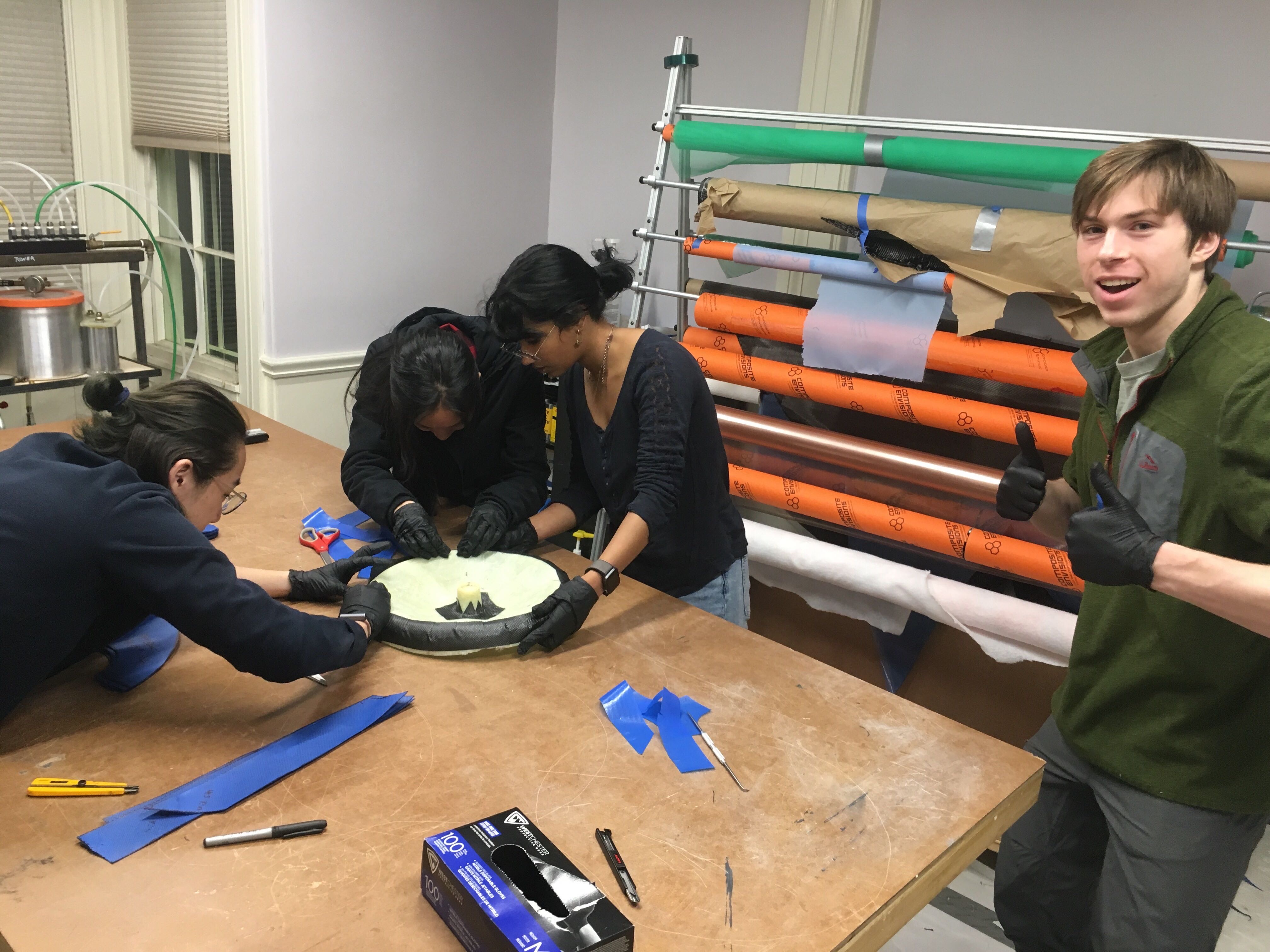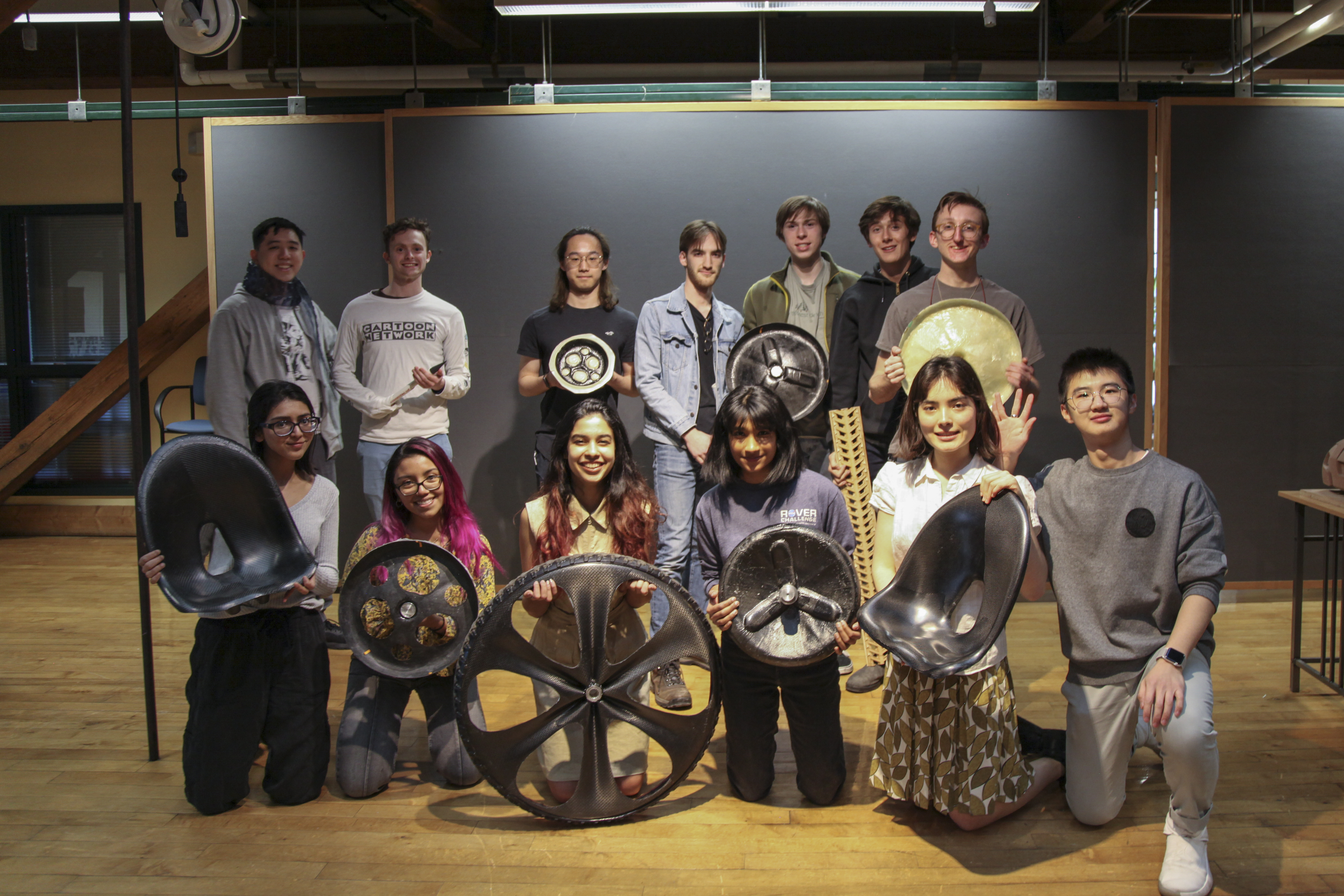RISD ROVER ⚙️️
Vehicle Design
9 monthsGroup Project // RISD Rover Team
Overview
RISD Rover is a student lead team that builds a vehicle to compete in Nasa’s Annual Human Exploration Rover Challenge. Our goal is to build a human powered vehicle that is able to quickly and effectively traverse a martian surface inspired obstacle course while its two riders also complete a series of tasks that simulate sample collection, and other activities that would occur on the surface of mars. Over the course of 9 months we design, test, and build our Rover to meet these challenges.
Personal Role
I was a member of the 2019 team, which won second place as well as the featherweight award.
I was also one of the team leads for the 2020 team, which designed and began fabrication of our rover before our efforts were halted by the Coronavirus Pandemic.
I was also one of the team leads for the 2020 team, which designed and began fabrication of our rover before our efforts were halted by the Coronavirus Pandemic.
2019
For the 2019 competition our driving goals were to reduce weight, and to make a robust suspension system in order to prevent the suspension failure experience in the 2018 competition.
My personal responsibilities included testing new parts, assisting in the design and creation of new carbon fiber wheels, and helping the suspension team design a new system. As I worked with the team I learned how to test designs, assess their effectiveness and then move on to fabricate finalized versions.
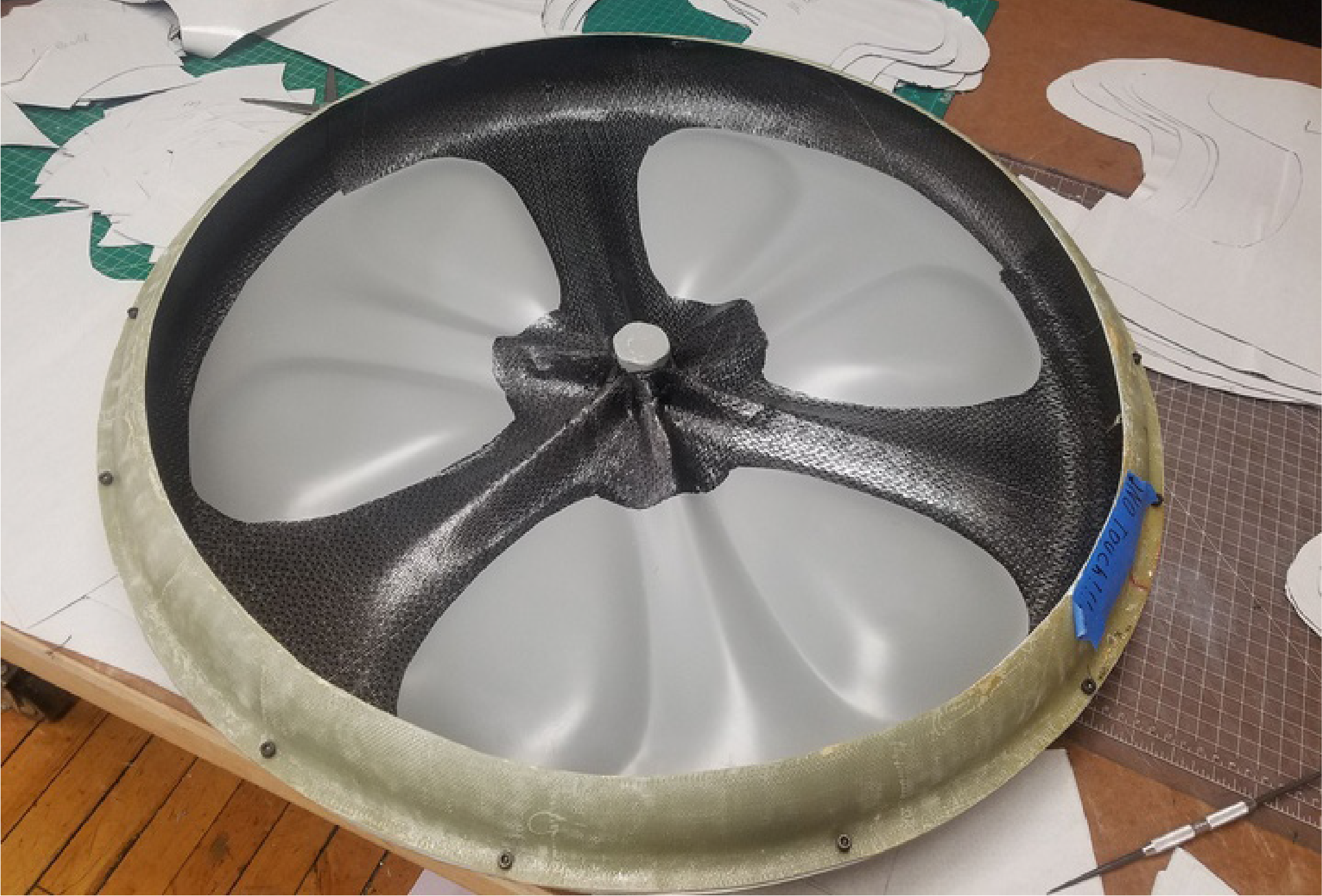
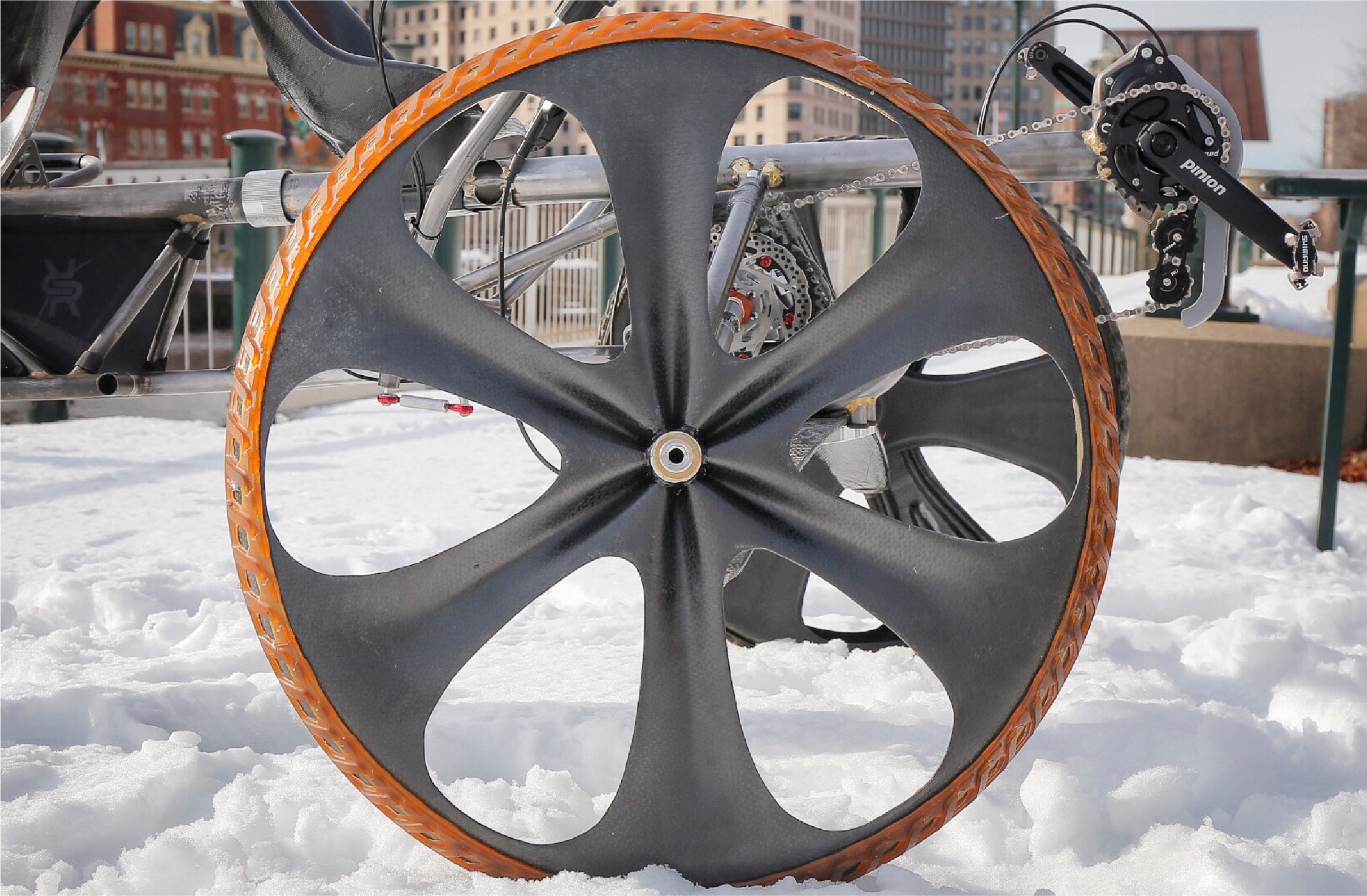

At the competition the Rover weighed in at 88 pounds, over 20 pounds lighter than any other rover in competition.
The team went on to win Second Place and the Featherweight Award.
2020
For the 2020 competition our driving goals were to continue to reduce weight, create a responsive steering system, and further develop our wheel designs.
As a Rover Team Lead and Steering/Suspension lead my personal responsibilities included leading design choices, redesigning the steering system, teaching technical skills to younger members, testing new designs, and organizing goals to ensure each subsystem was on track and integrated with its sister systems. I also worked closely with the wheels team to test and develop a new design.
2020 Competition Criteria
1.
Light Weight
2020 Competition Criteria
1.
Light Weight2.
Fits within a 5 x 5ft Cube3.
8 min course completion time
Wheels
Our plan for the 2020 wheel was to create a single shell carbon fiber wheel with a concave profile, that is stiffened with high temp foam inserts.
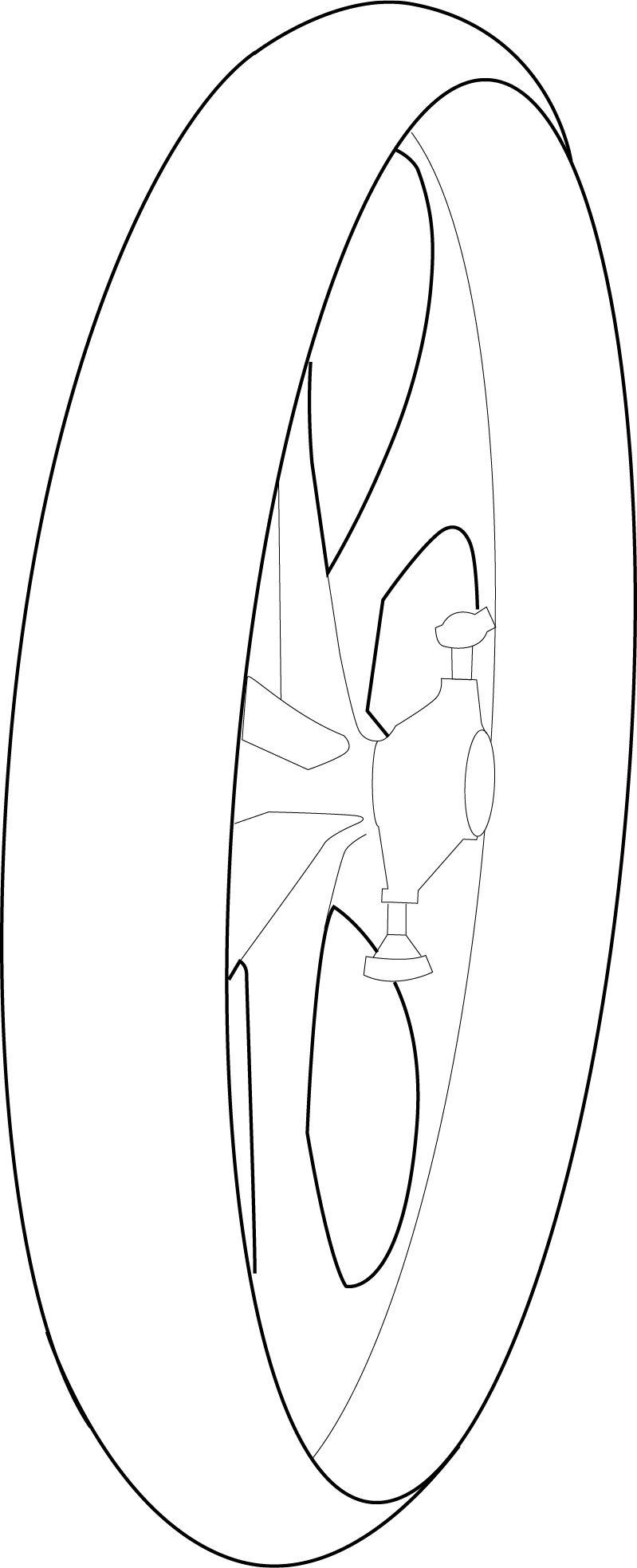

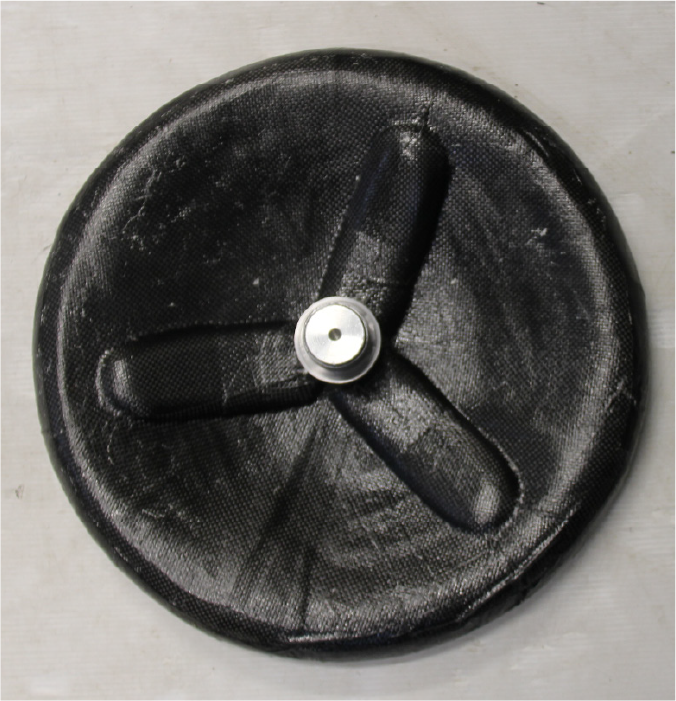
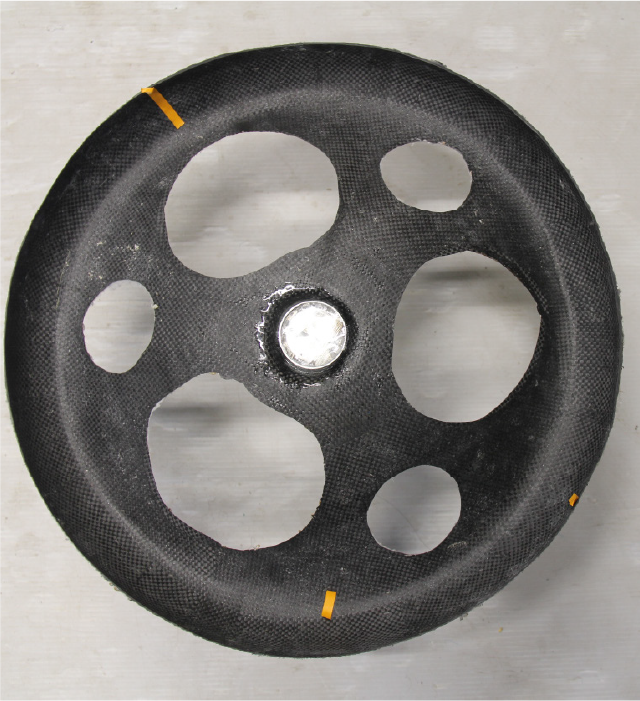
To test our designs we created small scale models and a custom testing jig to compare the stiffness and yield points of each design.
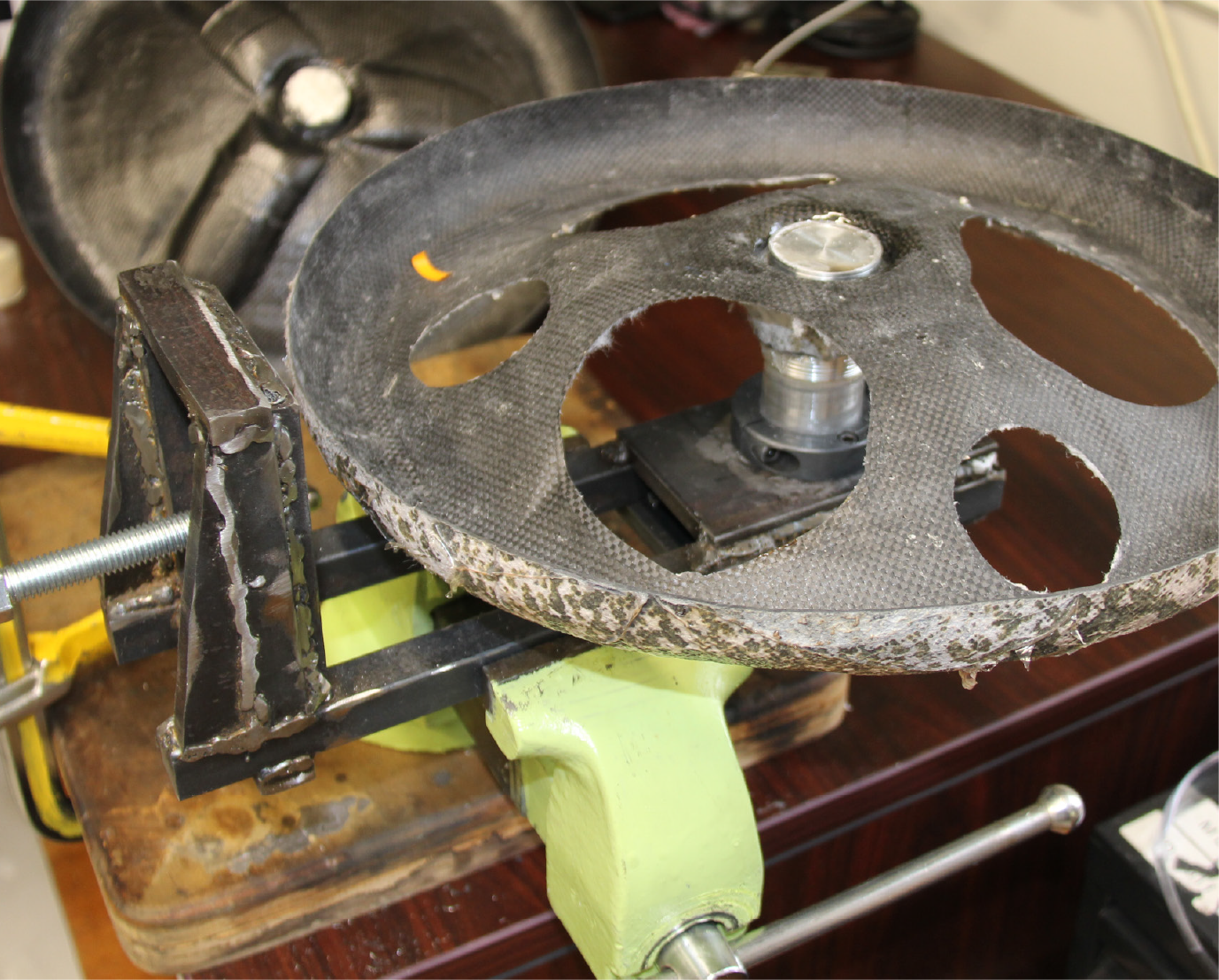
Steering
Through a series of tests and modifications to the steering geometry we were able to decrease the turning radius, make the steering more responsive and reduce bump steer.

I moved from wooden prototypes to low-fidelity aluminum prototypes to test what steering rocker geometry was the most effective. This build and test process let us test the steering by actually riding the rover and getting clear tactile feedback.
Before we were sent home because of the pandemic we began the process of strength testing the final rocker design in order to find areas where we could reduce weight.
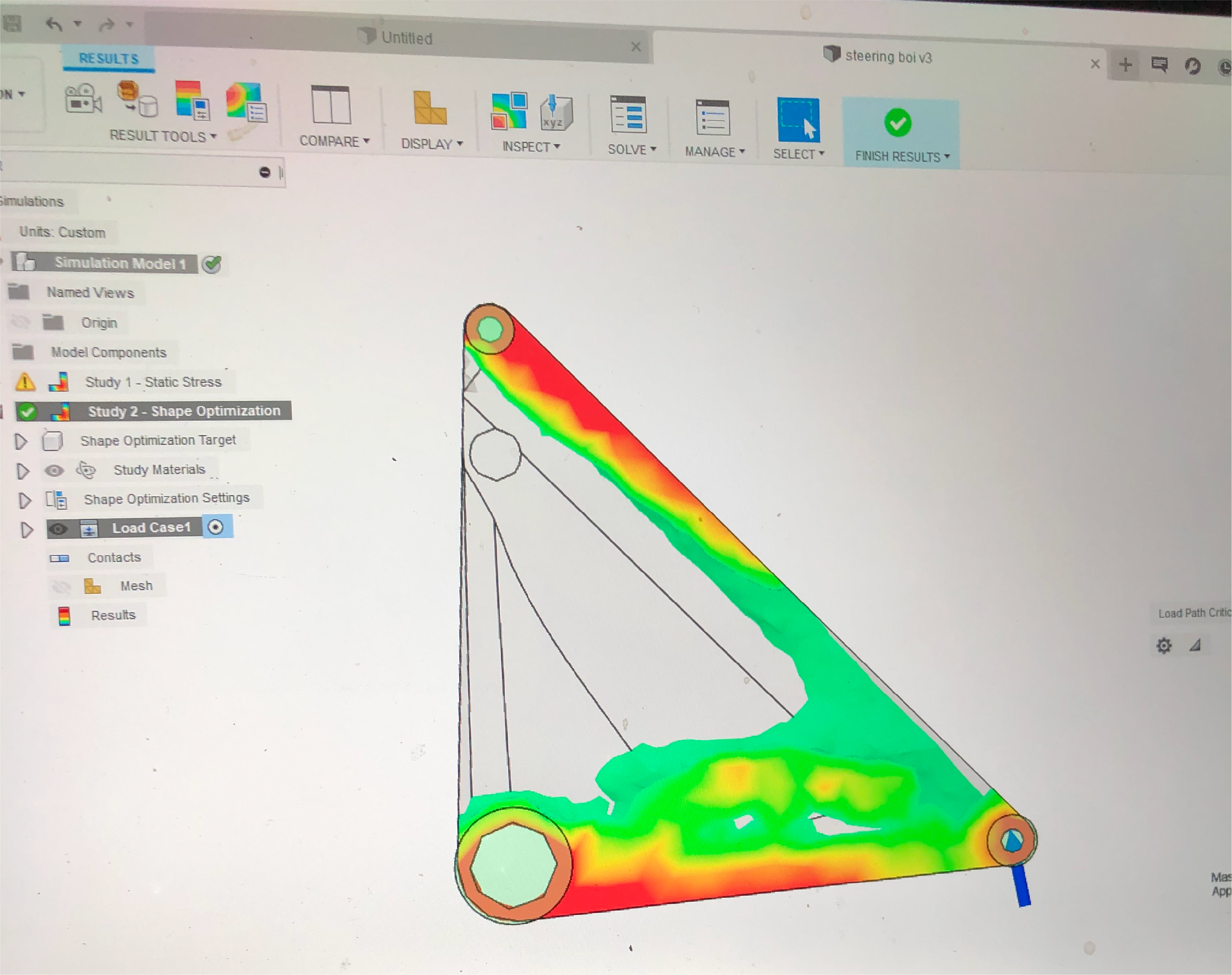
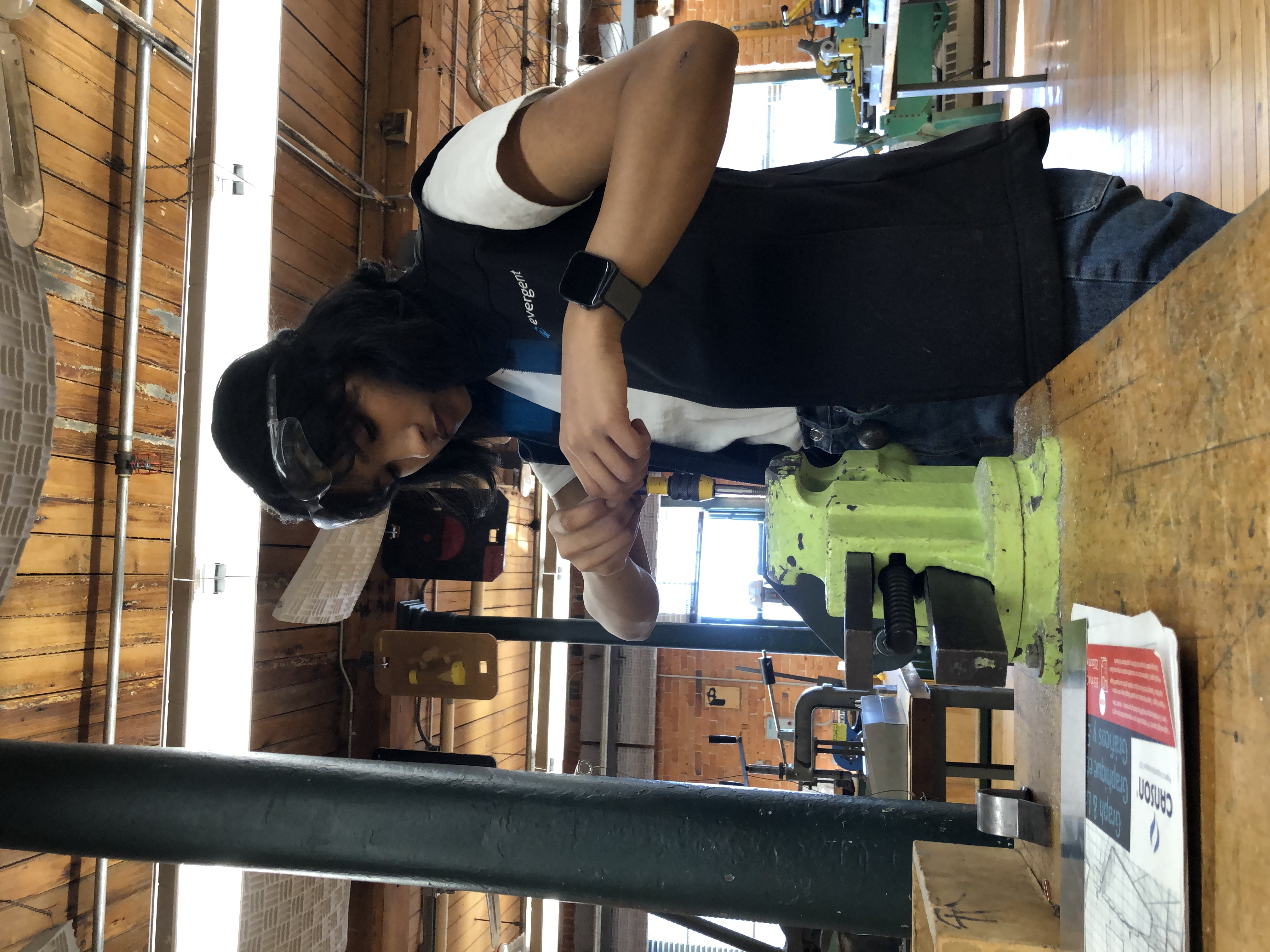
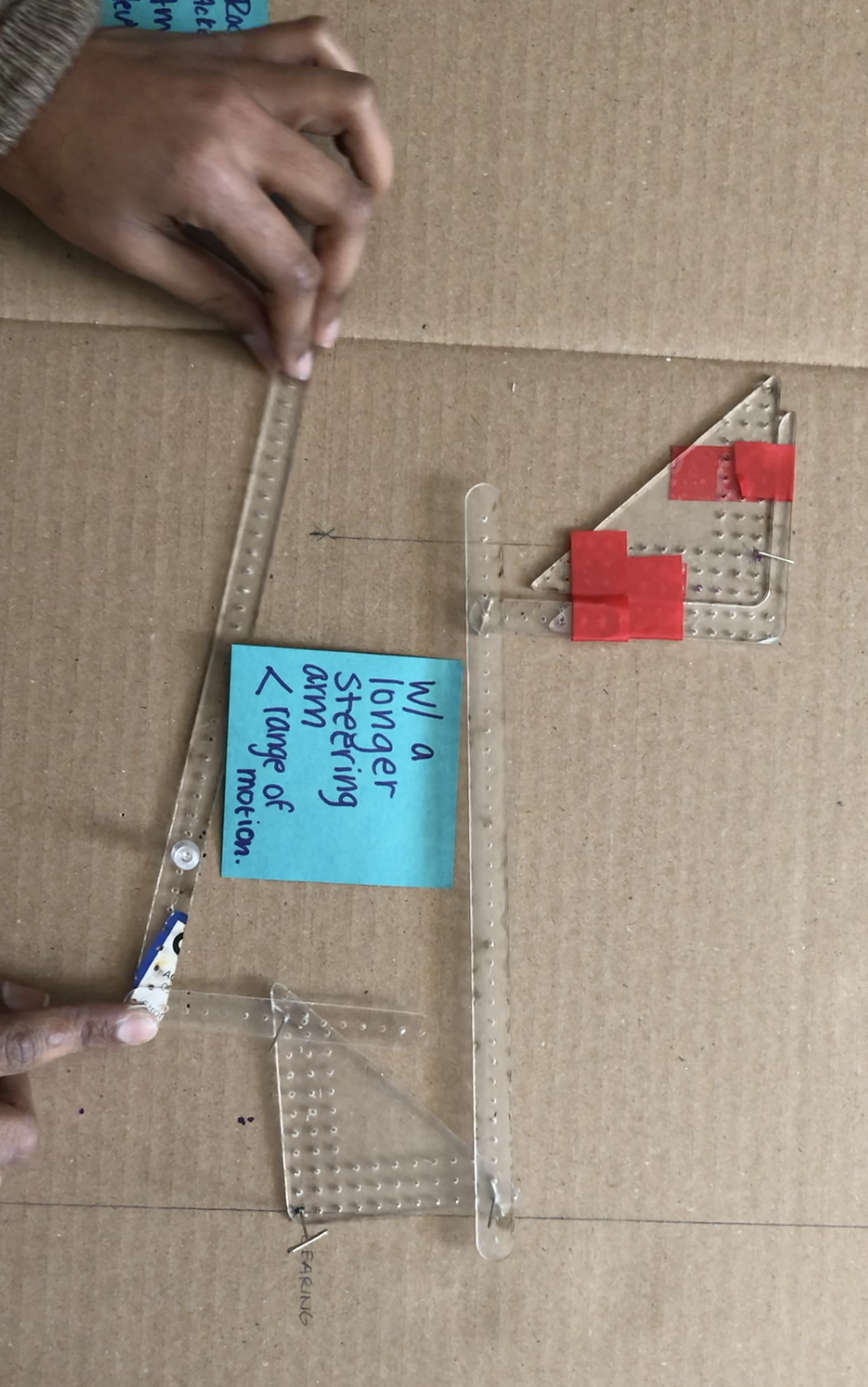

Additional Systems
For the 2020 competition we also worked on new ergonomic seats for the riders, redesigning soil collection, updating task storage, lowering the center of gravity, updating the rear drive train, and redesigning the uprights.
